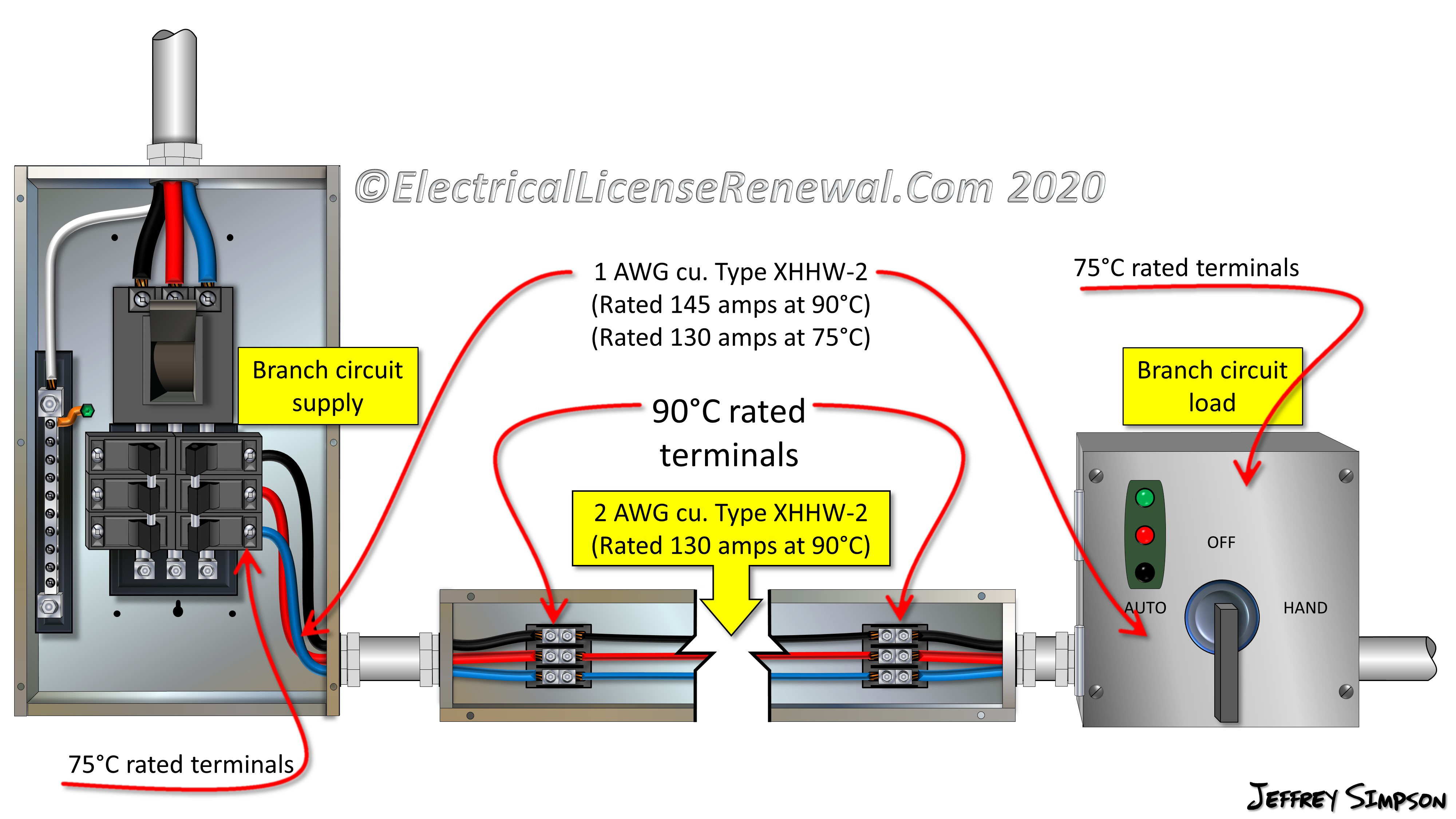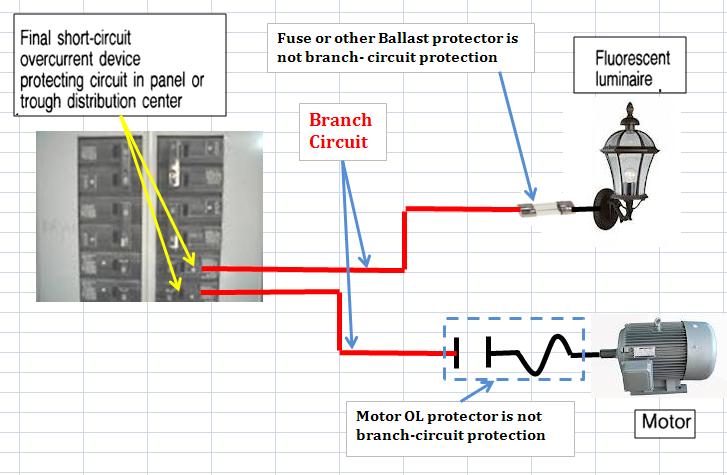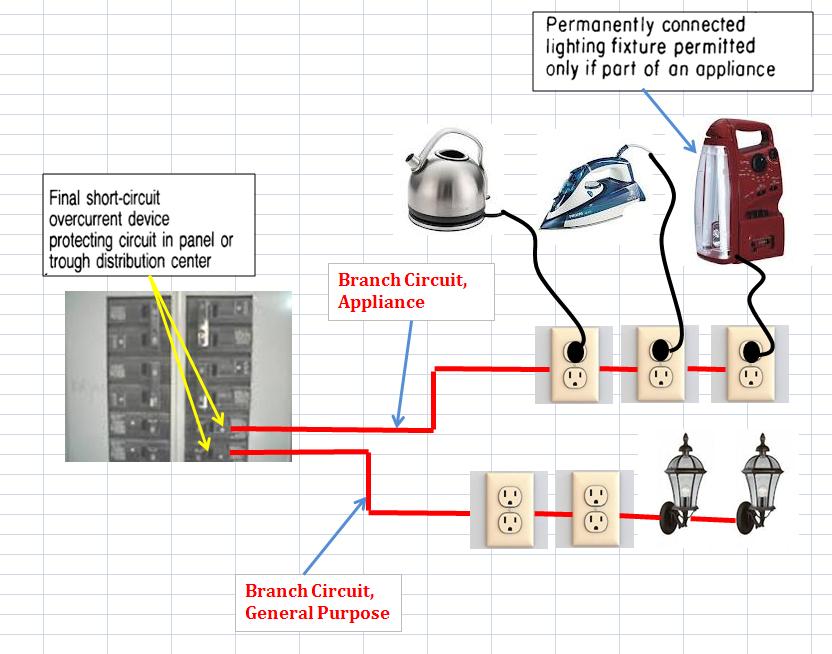Electrical Branch Circuit
Are you familiar with electrical branch circuits? If not, you are in for a treat. In this article, we'll explore everything you need to know about electrical branch circuits, from what they are, why they matter, and much more.
Pain Points
If you have ever had an electrical issue in your home or office building, you know how important electrical branch circuits can be. From tripping breakers to nonfunctioning electrical devices, electrical issues can cause frustration and inconvenience. This is where understanding electrical branch circuits comes in handy.
Target of Electrical Branch Circuit
An electrical branch circuit is a path of electric current that flows from one part of an electrical system to another. It is typically used to power a particular device or group of devices on an individual basis. Electrical branch circuits are found in virtually every building and are an essential component of a properly functioning electrical system.
Summary of Electrical Branch Circuit
In summary, understanding electrical branch circuits is crucial for anyone who wants to maintain a properly functioning electrical system. Knowing what they are, how they work, and what their purpose is, can help you troubleshoot electrical issues and ensure that your electrical system is in proper working condition.
What is an Electrical Branch Circuit?
At its simplest, an electrical branch circuit is a path for electric current that runs from a circuit breaker or fuse panel to the electrical device it powers. A circuit can be made up of various components, including wires, switches, outlets, and appliances. Understanding how these components work together to form a circuit is essential in understanding electrical branch circuits.
For instance, a typical electrical branch circuit may power a group of light fixtures in a room. The circuit will include wires running from an electrical panel to each of the light fixtures, as well as switches that turn the lights on and off.
The Importance of Electrical Branch Circuits
Electrical branch circuits are crucial to the safe and reliable operation of an electrical system. If the electrical load on a circuit is too high, the circuit breaker or fuse will trip, cutting off power to the devices that it powers. This can help prevent electrical fires and other hazards.
Additionally, electrical branch circuits allow electricians to troubleshoot electrical issues more quickly and efficiently. By isolating a particular device or group of devices on a given circuit, electricians can more easily identify and resolve electrical problems.
How are Electrical Branch Circuits Installed?
Electrical branch circuits are typically installed by professional electricians. The process begins with the installation of an electrical panel or circuit breaker box, which serves as the central hub for all the electrical branch circuits in the building.
From there, wires are run from the panel to each of the devices that the circuit will power. Outlets, switches, and other electrical components are then installed in the walls as needed, and the circuit is tested to ensure that it is functioning correctly.
Common Electrical Branch Circuit Issues
One common issue with electrical branch circuits is overloading. If too many devices are connected to a single circuit, it can overload the circuit and trip the breaker or blow the fuse. Additionally, older homes may have outdated electrical systems that do not meet current safety standards, which can lead to issues with electrical branch circuits.
Personal Experience with Electrical Branch Circuits
As an electrician, I have seen firsthand the importance of proper electrical branch circuits. One memorable experience was when a client was experiencing frequent power outages in their home. After some inspection, I discovered that an overloaded circuit was causing the problem. By installing an additional electrical branch circuit to distribute the load more evenly, we were able to resolve the issue and prevent further power outages.
Question and Answer
Q. Can Electrical Branch Circuits Cause House Fires?
A. Yes, electrical branch circuits can cause house fires if they are overloaded or if there is a short circuit. It's essential to have your electrical system inspected regularly to ensure that it is in proper working condition.
Q. How Many Devices Can I Safely Connect to an Electrical Branch Circuit?
A. The number of devices you can connect to an electrical branch circuit safely will depend on the electrical load of each device and the overall capacity of the circuit. It's best to consult with a professional electrician to ensure that your circuits are appropriately sized for your needs.
Q. What is the Difference Between a Single Branch Circuit and a Multi-Branch Circuit?
A. A single branch circuit powers a single device or group of devices, while a multi-branch circuit can power multiple devices or groups of devices. Multi-branch circuits typically have multiple circuit breakers or fuses to allow for greater flexibility in electrical wiring.
Q. Should I Attempt to Install an Electrical Branch Circuit Myself?
A. No, installing an electrical branch circuit should always be left to professional electricians. Improper installation can lead to electrical hazards and may not be up to code.
Conclusion
As you can see, electrical branch circuits are an essential part of every building's electrical system. By understanding what they are, how they work, and why they matter, you can help ensure that your electrical system is functioning properly and safely. Don't hesitate to contact a professional electrician if you have any questions or concerns about your electrical branch circuits.
Gallery
210.19(A)(1) Branch Circuits.

Photo Credit by: bing.com / branch electrical circuit nec circuits panelboard power wire equipment run load conductors each
NEC Article 100 - Branch Circuit Definition ~ Electrical Knowhow

Photo Credit by: bing.com / branch circuit definition nec electrical fig
NEC Article 100 - Branch Circuit Definition ~ Electrical Knowhow

Photo Credit by: bing.com / branch circuit nec electrical appliance definition general fig
700.19 Multiwire Branch Circuits.
Photo Credit by: bing.com / branch circuits multiwire electrical circuit lighting nec emergency
Branch Circuit · Energy KnowledgeBase
Photo Credit by: bing.com /
0 Response to "Electrical Branch Circuit"
Post a Comment